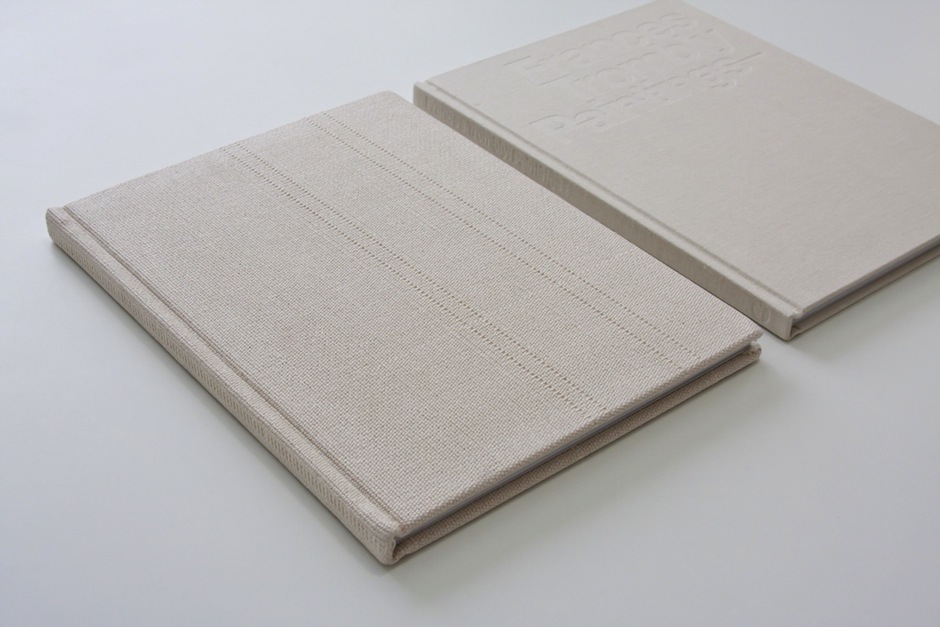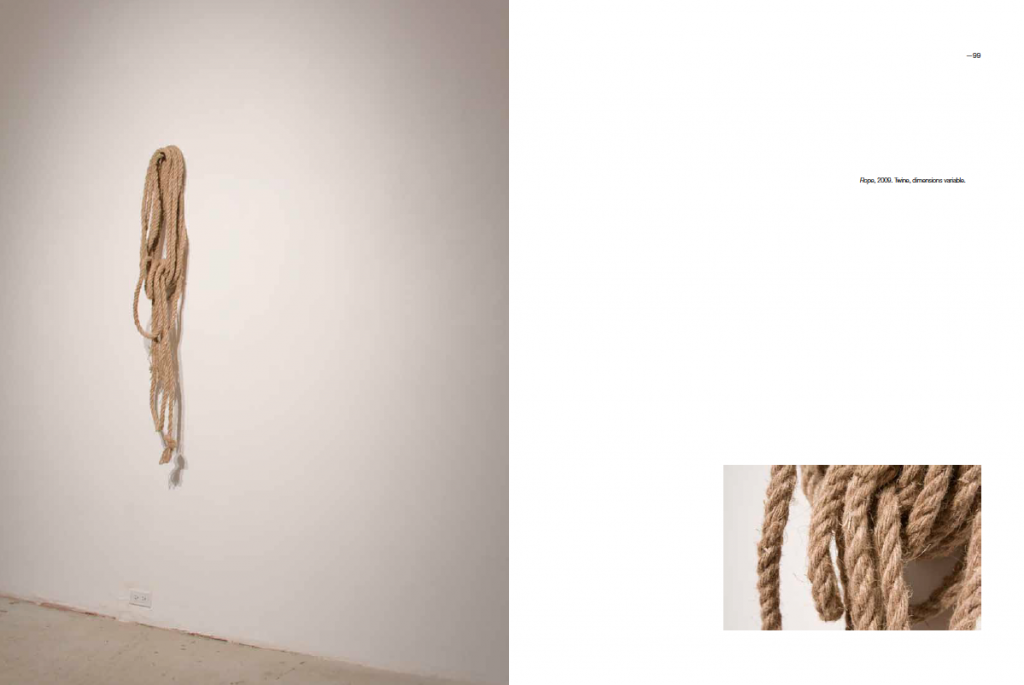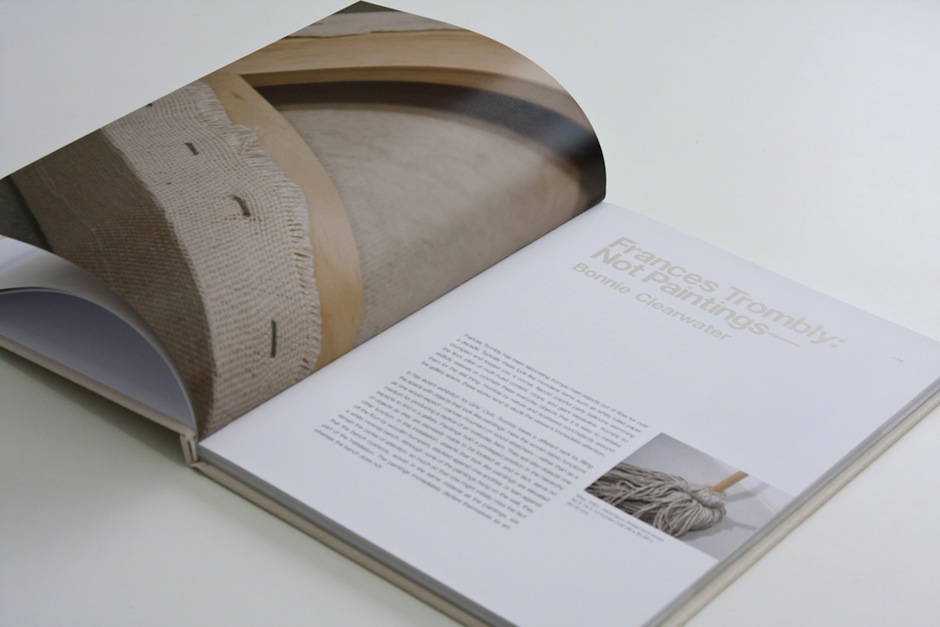
The art of the book: Frances Trombly
The Internet and Kindle have started to make printed material increasingly obsolete, going the way of vinyl records and CDs. But the one hold-out remains art books — there’s something about the experience of seeing the colors and the contours of art on a glossy page that feels more satisfying than on the screen. So, while this online medium is an attempt to describe a new book focused on the artwork of Frances Trombly, there is no substitute to picking up an actual copy of “Frances Trombly: Paintings,” based on the year-long solo show from the Miami artist at Fort Lauderdale’s Girls’ Club (both the exhibition and the publication were made possible from a Knight Arts grant).
Let’s start with the title, which on the cover has a line drawn through “Painting.” That’s because Trombly’s woven canvases are not technically paintings. The cover, then, is also made from off-white canvas, a beautifully tactile element that obviously can’t be translated to the computer screen. And the off-white color forces the reader to treat the book carefully — dirt on the hands will contaminate it quickly. That’s a book.
Trombly’s exhibit included canvases that were stretched over wood frames, like painting, but were monotone woven works. However, on closer inspection, they were far more complex. There are slight gradations of color within the off-white and imperfections in the weaving. The canvases were not hung, but leaning against the walls, in some cases the wood frames (also with warts) were revealed. A centerpiece was a reupholstered Knoll furniture bench, covered in Trombly’s handmade canvas.
This was a very subtle show, a departure and at the same time a progression of the art that Trombly has become known for — everyday, mundane objects, such as grocery store receipts, a welcome mat, confetti that were in fact woven, crocheted, sewed. There is a reference to the traditional craft of women (which is why the project took place at the Girl’s Club, which concentrates on the work of contemporary female artists) and also to the 20th-century fascination with “ready-mades.” This book includes images, including close-up detailing of both her current and past work, with an introduction by MOCA’s Director Bonnie Clearwater and foreword by artist Michelle Weinberg. It also is interspersed with the work of related art, handmade or ready-made pieces from the likes of Richard Tuttle and, of course, Marcel Duchamp. Finally, there is a fun and fascinating little chapter on the history of weaving and the historical relationship between women and the loom by Denise Delgado.
So wipe off your hands and pick up the real thing, a book.
Published for the exhibition “Frances Trombly: Paintings” 2011, by the Girls’ Club, 117 N.E. Second St., Fort Lauderdale; www.girlsclubcollection.org.
Recent Content
-
Artsarticle ·
-
Artsarticle ·
-
Artsarticle ·



